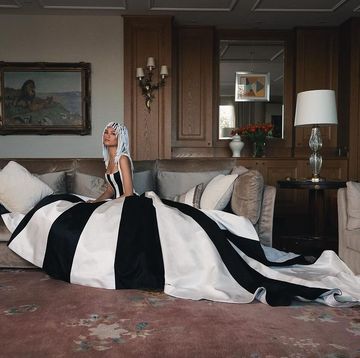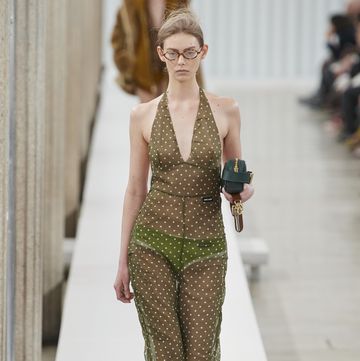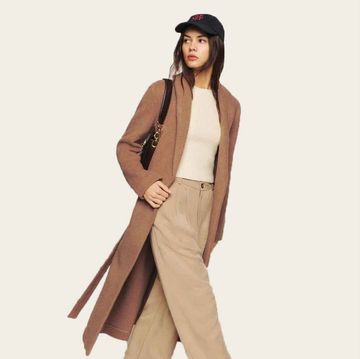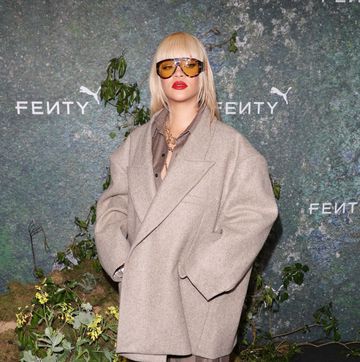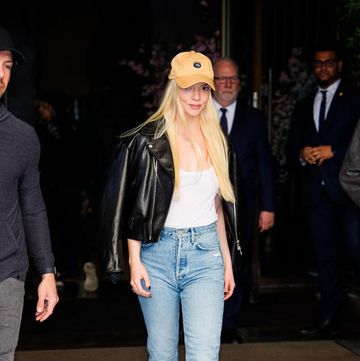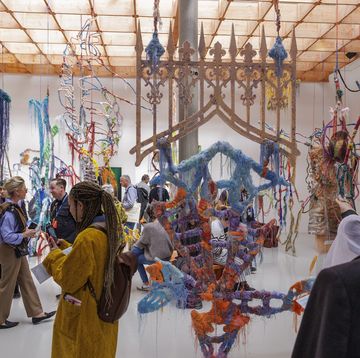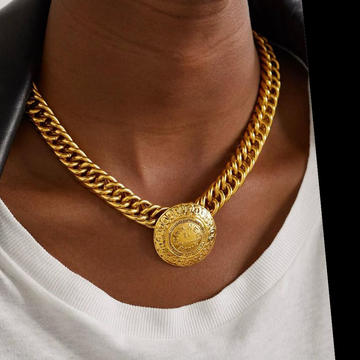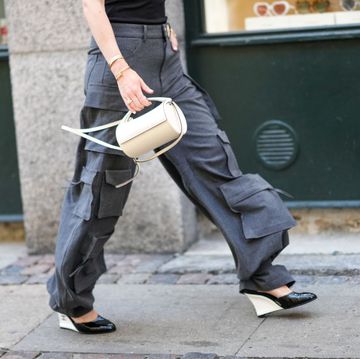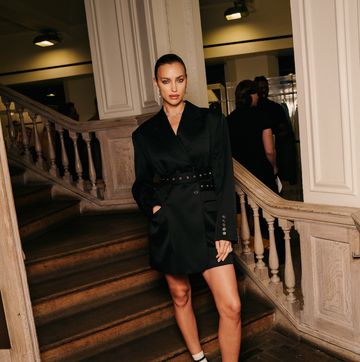That Karl Lagerfeld is plugged into whatever global zeitgeist is going on and was able to intuit a year ago that the place to see and be seen (especially for luxury goods brands) would be South Korea – is invaluable to Chanel. That he was able to come up with a fashion collection that captured the energy and spirit of mega-metropolis Seoul, is more remarkable still. ‘I wanted to use the modernity of Seoul and turn it into something new,’ he said after presenting the Chanel Cruise collection inside the Dongdaemun Design Plaza, the city’s iconic silver spaceship-like landmark designed by Zaha Hadid.
Inside was equally out of this world with its graphically curved walls and arched ceiling in pristine white. The ‘set’ of over 1000 mutlicoloured shiny seats resembling giant Smarties was Mr Lagerfeld’s ‘landscape art installation’ that riffed on K-Pop, South Korea’s flash-fun music genre phenomenon. Its stars were there, of course. Queen of K-Pop, the artist known as CL, in head-to-toe monochrome Chanel and pearl-rimmed shades and King of ‘K-Rap’, G-Dragon donning black Chanel leather. At the end of the show, Mr Dragon transmitted a video of Mr Lagerfeld on the catwalk hand in hand with his godson Hudson to his 4.2 million Instagram followers. It says a lot about why we were there and what we were there to do – just imagine the social footprint of the K-Pop superstar collective, let alone the rest of the audience. No wonder Chanel chooses to host its cruise collections abroad at such lavish expense – and why so many other luxury goods companies have followed suit.
Does Karl Lagerfeld listen to K-Pop? ‘Yes of course,’ he replied in an interview post-show. ‘I listen to everything that is modern because my ears need to be informed as much as my eyes!’
This was only Lagerfeld’s second time in Seoul, but as he has always explained, his lack of physical presence in a place has never stopped the unfurling of his imagination.
Far be it for Mr Lagerfeld to offer up any literal translation of Gangnam style – Seoul’s upmarket district made famous by PSY where designer-clad teenagers, in pale face make-up (worn by boys and girls) walk arm in arm. Instead, Lagerfeld took elements of traditional Korean dress: the ‘Hambok’ (kimono), ‘Cheogori’ (bolero) and ‘Chima’ (a strapless, full dress that shoots out from above the bust) to create his new silhouettes. He also snared the country’s heritage for patchworking superfine linens and inlaying mother of pearl on clouds of black organza. He borrowed the colours of vibrant Korean ceramics and took the doors of Seoul’s Changdeok Palace as inspiration for origami details. He also said he had fallen in love with Korean letters ‘so graphic, so modern’, which, on close inspection, had been woven into a classic Chanel tweed jacket – the calligraphic characters that circled the waist spelt out ‘Chanel’ and ‘Rue Cambon’.
‘Everyone has taken inspiration from China, Japan and Africa – me included – but a collection inspired by the past of Korea, I have not seen,’ said Lagerfeld. ‘But they have to be adapted for the world of today.’
Nothing is more unappealing to Mr Lagerfeld than the look of the past without an update. In fact to him, the past is obsolete. That’s why the textiles rooted in Korea’s past came spliced with liquid-like vinyl or silicone-coated lace or embroidered with plastic, causing the always-unfamiliar kaleidoscope of newness. From the girls’ Sam McKnight-coiffed hair, or 'hats', as Lagerfeld called the black hair-pieces, some of which resembled Mickey Mouse ears, to their high-shine, blocky white shoes – the effect was stridently in the now. And joyful, too.
In the upper echelons of South Korean society it is said that a Chanel handbag is a traditional wedding present from husband to wife. Judging by this evening’s wall-to-wall Chanel-wearing, one can only imagine the potential profits when Chanel opens its Seoul flagship in 2017.
See all the looks from the show here
All images: Getty.

